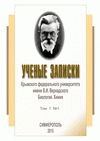Improving the accuracy of estimating greenhouse gas absorption remains an urgent problem. Identification of the ratio of carbon stocks in soils and stand biomass of young and mid-aged forests will allow clarifying the direction of carbon fluxes in forest ecosystems during the development period most productive for atmospheric decarbonization. Increasing the accuracy of carbon stocks in components of forest ecosystems is necessary to recognize the real absorption capacity of Russian forests at the international level. The purpose of this study was to determine the carbon stocks in stand biomass and soils of young and mid-aged forests in the Republic of Tatarstan, as well as their ratio for forests of different species composition and origin. The studies were conducted on 6 sample plots in the most common forest stands aged 10 to 40 years. Organic carbon stocks in soils, stand biomass and other components of forest ecosystems located on sod-podzolic soils were determined. Total carbon stocks, the share of individual components and the ratio of stocks in stand biomass and soils were calculated. It was found that carbon stocks in the biomass of young stands of natural origin ranged from 8.5 to 50.8 t/ha, while in artificial stands they were 123.0 t/ha, and in mid-aged forests – 102.6–173.4 t/ha. Maximum carbon stocks were found in the biomass of stands of mid-aged birch forest, minimum — in young birch forest. Total organic carbon stocks in the studied ecosystems can vary by up to five times and range from 41.4 t/ha to 208.4 t/ha. The share of stand biomass in the structure of total ecosystem stocks ranged from 20.4 % to 91.4 %. Carbon stocks in sod-podzolic soils of the sample sites varied from 5.5 t/ha to 38.9 t/ha. This was lower than the reference values, but even in this case, soil carbon stocks account for 4.1 % to 73.7 % of the total ecosystem carbon stocks. Clarification of carbon stocks in soils of forested areas should be continued. Perhaps, regional databases on soil carbon stocks should be created, taking into account not only the species and age composition of the forest, but also the taxonomic affiliation of soils. In a 10-year-old birch forest the ratio of carbon stocks in the stand and soil was 3:10, in a 25-year-old birch forest it changed to 11:2, in a young pine forest of natural origin it was about 2:1, in artificial pine plantations of the same age it was 22:1. In natural birch forests, during the transition from young forests of age class I to mid-aged forests, carbon stocks in stand biomass increased by 20.5 times. The results obtained demonstrate the active participation of young and mid-aged natural forests in atmospheric decarbonization, with the main carbon sink at this stage of forest ecosystem development occurring in phytomass. Carbon stocks in soil are more conservative. The ratio of carbon stocks in stand biomass and soils of young aspen and middle-aged oak forests was close to the values for natural forests of other species of the same age. Carbon stocks in stand biomass of artificial pine planting was 2.5 times higher than in natural pine forest of the same age (25 years). Further research is required to draw scientifically grounded conclusions on the contribution of natural and planted forests to carbon sequestration.
soil, forest stand, carbon reserves, forest ecosystems, components of biogeocenosis
1. Chestnyh O. V. Raspredelenie zapasov organicheskogo ugleroda v pochvah lesov Rossii / O. V. Chestnyh, D. G. Zamolodchikov, A. I. Utkin, G. N. Korovin // Lesovedenie. – 1999. – №2. – S. 13–21.
2. Chestnyh O. V. Obschie zapasy biologicheskogo ugleroda i azota v pochvah lesnogo fonda Rossii / O. V. Chestnyh, D. G. Zamolodchikov, A. I. Utkin // Lesovedenie. – 2004. – № 4. – S. 30–42.
3. Kulagina V. I. Zapasy organicheskogo ugleroda v pochvah Raifskogo uchastka Volzhsko-Kamskogo zapovednika / V. I. Kulagina, A. B. Aleksandrova, S. S. Ryazanov, R. R. Shagidullin, A. A. Andreeva,
4. Kulagina V. I. Zapasy ugleroda, soderzhanie gumusa i azota v pochvah Saralinskogo i Raifskogo uchastkov Volzhsko-Kamskogo zapovednika / V. I. Kulagina, A. B. Aleksandrova, S. S. Ryazanov,
5. Metodicheskie ukazaniya po kolichestvennomu opredeleniyu ob'ema pogloscheniya parnikovyh gazov. Utv. Rasporyazheniem Minprirody Rossii ot 30.06.2017 No20-r.
6. Kuznecova A. I. Zapasy ugleroda v peschanyh pochvah sosnovyh lesov na zapade Rossii / A. I. Kuznecova, N. V. Lukina, A. V. Gornov, M. V. Gornova, E. V. Tihonova, V. E. Smirnov,
7. Ivanov D. V. Predvaritel'nye ocenki zapasov ugleroda v pochvah lesnyh ekosistem Respubliki Tatarstan / D. V. Ivanov, A. B. Aleksandrova // Rossiyskiy zhurnal prikladnoy ekologii. – 2022. – № 2
8. Osipov A. F. Zapasy ugleroda v pochvah lesov Krasnoyarskogo kraya: analiz roli tipa pochvy i drevesnoy porody / A. F. Osipov, V. V. Starcev, A. S. Prokushkin, A. A. Dymov // Teoreticheskaya
9. Filipchuk A. N. Analiticheskiy obzor kolichestvennyh i kachestvennyh harakteristik lesov Rossiyskoy Federacii: itogi pervogo cikla gosudarstvennoy inventarizacii lesov / A. N. Filipchuk,
10. Nakvasina E. N. Dinamika zapasov ugleroda pri formirovanii lesov na postagrogennyh zemlyah / E. N. Nakvasina, Yu. N. Shumilova // Izvestiya vuzov. Lesnoy zhurnal. – 2021. – №1 – S. 46–59.
11. Bulatkin G. A. Ocenka vliyaniya upravlyaemyh lesov na balans uglekislogo gaza v atmosfere zemli / G. A. Bulatkin // Zhizn' Zemli. – 2021. – T.43, №1. – S. 54–66.
12. Gosudarstvennyy doklad «O sostoyanii prirodnyh resursov i ob ohrane okruzhayuschey sredy Respubliki Tatarstan v 2023 godu» // Ministerstvo ekologii i prirodnyh resursov Respubliki
13. Chernova O. V. Ocenka zapasov organicheskogo ugleroda lesnyh pochv v regional'nom masshtabe/ O. V. Chernova, I. M. Ryzhova, M. A. Podvezennaya // Pochvovedenie. – 2020. – №3. – S. 140‒150.
14. Soil Organic Carbon: the hidden potential // Food and Agriculture Organization of the United Nations Rome. Italy. FAO. 2017. 77 p.
15. Celitan I. A. Struktura i rost nasazhdeniy, formiruyuschihsya na garyah i vyrubkah v Krasnoyarskom Priangar'e / I. A. Celitan, V. A. Sokolov, I. M.Danilin//Sibirskiy lesnoy zhurnal. –2021.
16. Dreimanis V. A. Die Bewirtschaftung von Birkenbestdnden in Lettland / V. A. Dreimanis // Forst und Holz. – 2002. – Vol. 57, No. 15/16. – P. 465–470.
17. Vetchinnikova L. V. Prostranstvennaya i vozrastnaya struktura populyaciy berezy povisloy i karel'skoy berezy / L. V. Vetchinnikova, A. F. Titov // Trudy Karel'skogo nauchnogo centra RAN.– 2021.
18. Luganskiy N. A. Sravnitel'naya proizvoditel'nost' iskusstvennyh i estestvennyh drevostoev / N. A. Luganskiy, O. V. Shipicina // Lesnoy vestnik. – 2008. – №3. – S.50–54.
19. Ul'danova R. A. Produktivnost' dubovyh nasazhdeniy pribrezhnyh Territoriy reki Volgi / R. A. Ul'danova, A. T. Sabirov // Rossiyskiy zhurnal prikladnoy ekologii. – 2021. – №3 – S.11–22.
20. Zamolodchikov D. G. Byudzhet ugleroda upravlyaemyh lesov Rossiyskoy Federacii v 1990-2050 gg. Retrospektivnaya ocenka i prognoz / D. G. Zamolodchikov, V. I. Grabovskiy, G. N. Korovin,





